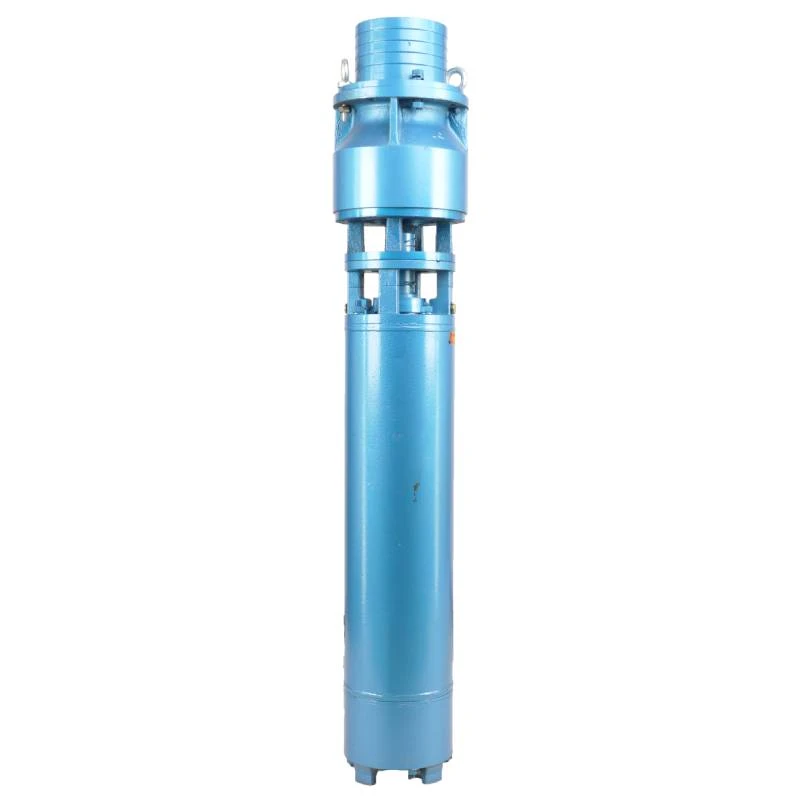Nov . 09, 2024 06:20 Back to list
Choosing the Right Submersible Pump for Deep Well Applications and Best Practices
Understanding Submersible Pumps for Deep Wells
In the world of water extraction and management, submersible pumps have become a cornerstone technology, especially when dealing with deep wells. The unique design and functional characteristics of these pumps make them particularly suitable for deep-water applications. This article explores how submersible pumps work, their advantages, and the considerations to keep in mind when using them for deep wells.
What is a Submersible Pump?
A submersible pump is a device specifically designed to be submerged in fluid, often used for pumping water from deep wells. Unlike other types of pumps that operate above the water level, submersible pumps are placed directly into the water, allowing for efficient operation. This setup reduces the risk of cavitation, which can be a significant issue with surface pumps, especially in deep well applications where the water level may be very low.
How Do Submersible Pumps Work?
The fundamental operation of a submersible pump involves electric motor-driven impellers or rotors that draw water into the pump through an intake screen and push it to the surface through a discharge pipe. The motor is hermetically sealed and located at the bottom of the well, directly above the pump stage. As the motor spins, it generates centrifugal force, forcing the water upward. The design allows multiple stages to be stacked vertically, enabling higher lift capabilities suitable for deep well applications.
This vertical configuration is particularly advantageous in deep wells, where the water source may be hundreds or even thousands of feet below ground level. Submersible pumps are engineered to operate at great depths without losing efficiency or risking mechanical failure.
Advantages of Submersible Pumps
1. Energy Efficiency Submersible pumps are known for their high energy efficiency. Because they operate underwater, they do not need additional energy to lift water via suction, as traditional pumps do.
2. Space-Saving Design The compact design of submersible pumps means they take up less physical space compared to some surface pumps and their associated machinery. This can be particularly beneficial in wells with limited access.
3. Reduced Noise Pollution These pumps operate quietly since they are submerged in water. This characteristic makes them ideal for residential areas or environments where noise is a concern.
submersible pump deep well

5. Versatility Submersible pumps can be used in various applications beyond just deep wells, including in construction sites, drainage, and sewage applications, making them a versatile tool for water management.
Considerations When Using Submersible Pumps in Deep Wells
While submersible pumps are an excellent choice for deep wells, several factors need to be considered to ensure successful operation.
- Pump Sizing It's essential to select the right size and capacity for the specific well depth and water demand. An improperly sized pump can lead to inefficiencies or failure.
- Material Selection Since submersible pumps will interact with water and possibly minerals, choosing the correct materials for durability and corrosion resistance is crucial.
- Regular Maintenance Although submersible pumps are designed for longevity, they require regular maintenance to ensure optimal performance. Periodic inspections can help identify issues before they become major problems.
- Power Supply Ensuring a reliable power source is vital, as submersible pumps rely on electricity to operate. Backup power options may be necessary in remote locations.
Conclusion
Submersible pumps for deep wells represent a reliable and efficient solution for water extraction. Their unique design, combined with energy efficiency and various advantages, makes them a go-to choice for both residential and industrial applications. However, careful consideration regarding pump selection, materials, maintenance, and power supply is essential to maximize their benefits and ensure long-term functionality. As the demand for efficient water management continues to grow, submersible pumps are poised to remain an integral part of the solution.
-
Submersible Water Pump: The Efficient 'Power Pioneer' of the Underwater World
NewsJul.01,2025
-
Submersible Pond Pump: The Hidden Guardian of Water Landscape Ecology
NewsJul.01,2025
-
Stainless Well Pump: A Reliable and Durable Pumping Main Force
NewsJul.01,2025
-
Stainless Steel Submersible Pump: An Efficient and Versatile Tool for Underwater Operations
NewsJul.01,2025
-
Deep Well Submersible Pump: An Efficient 'Sucker' of Groundwater Sources
NewsJul.01,2025
-
Deep Water Well Pump: An Efficient 'Sucker' of Groundwater Sources
NewsJul.01,2025
-
 Submersible Water Pump: The Efficient 'Power Pioneer' of the Underwater WorldIn the field of hydraulic equipment, the Submersible Water Pump has become the core equipment for underwater operations and water resource transportation due to its unique design and excellent performance.Detail
Submersible Water Pump: The Efficient 'Power Pioneer' of the Underwater WorldIn the field of hydraulic equipment, the Submersible Water Pump has become the core equipment for underwater operations and water resource transportation due to its unique design and excellent performance.Detail -
 Submersible Pond Pump: The Hidden Guardian of Water Landscape EcologyIn courtyard landscapes, ecological ponds, and even small-scale water conservancy projects, there is a silent yet indispensable equipment - the Submersible Pond Pump.Detail
Submersible Pond Pump: The Hidden Guardian of Water Landscape EcologyIn courtyard landscapes, ecological ponds, and even small-scale water conservancy projects, there is a silent yet indispensable equipment - the Submersible Pond Pump.Detail -
 Stainless Well Pump: A Reliable and Durable Pumping Main ForceIn the field of water resource transportation, Stainless Well Pump has become the core equipment for various pumping scenarios with its excellent performance and reliable quality.Detail
Stainless Well Pump: A Reliable and Durable Pumping Main ForceIn the field of water resource transportation, Stainless Well Pump has become the core equipment for various pumping scenarios with its excellent performance and reliable quality.Detail
